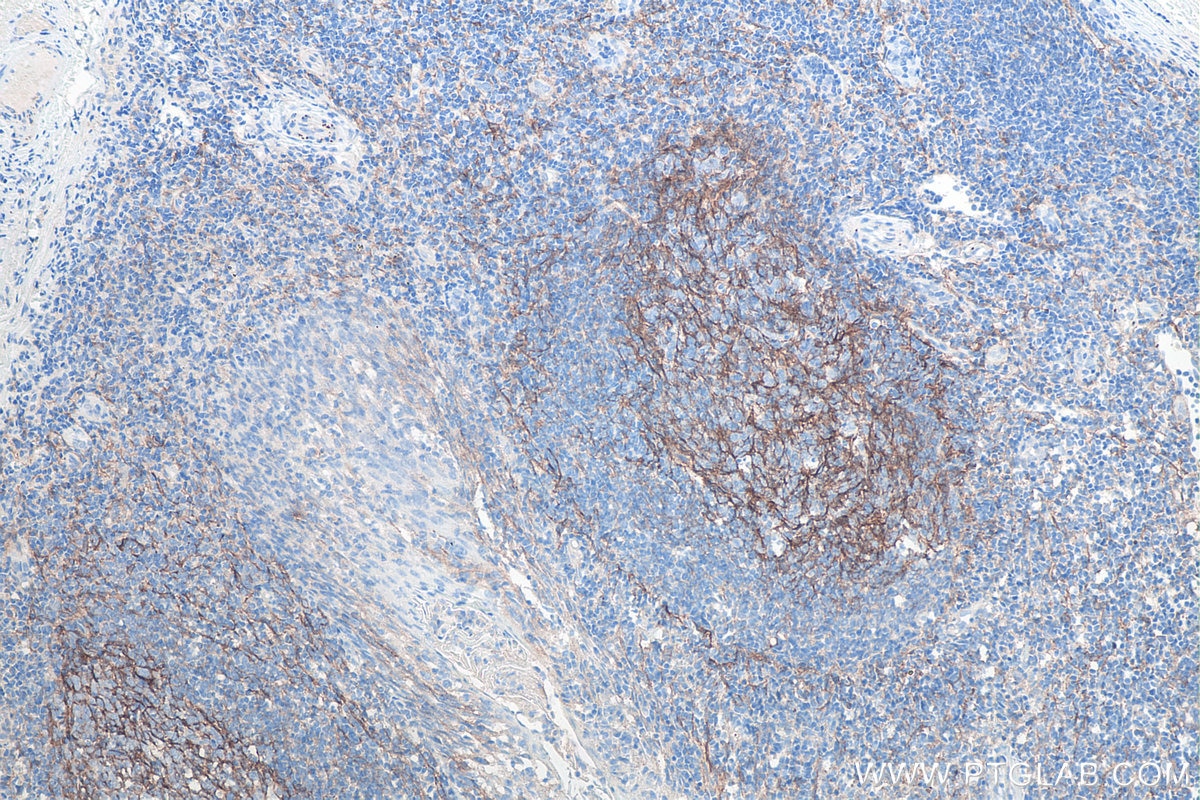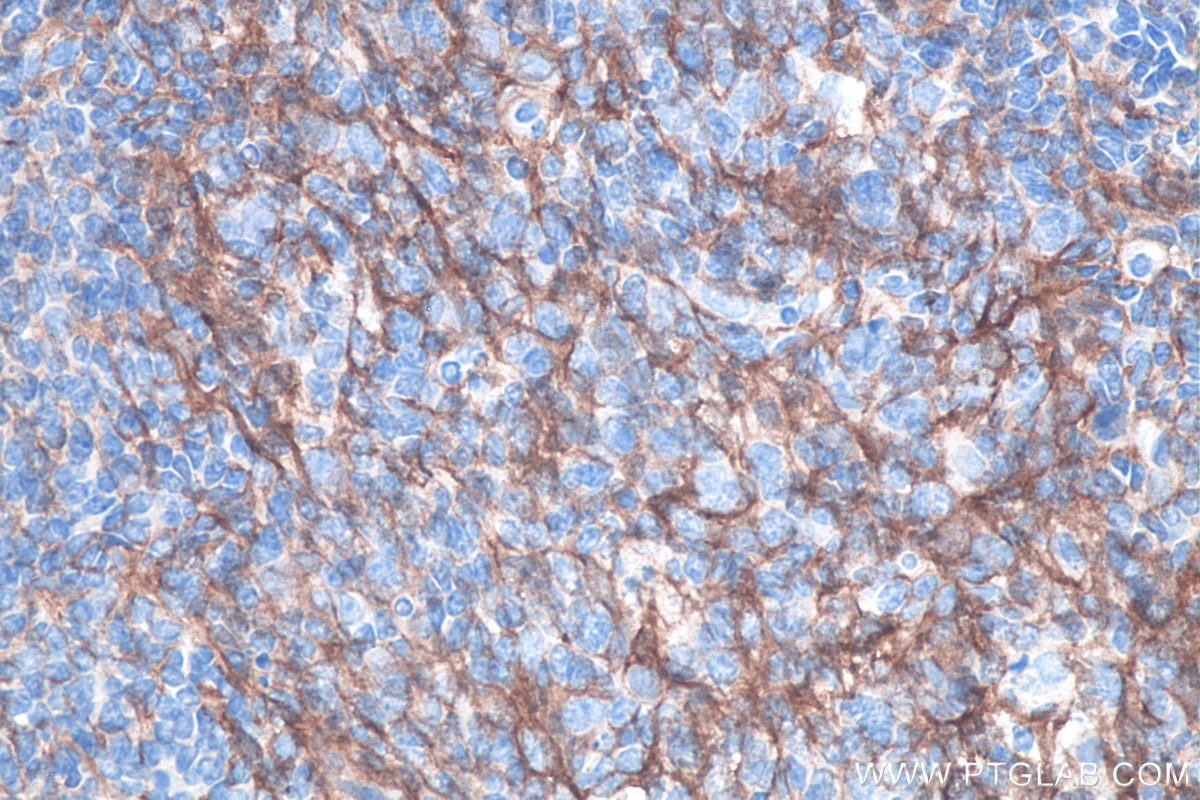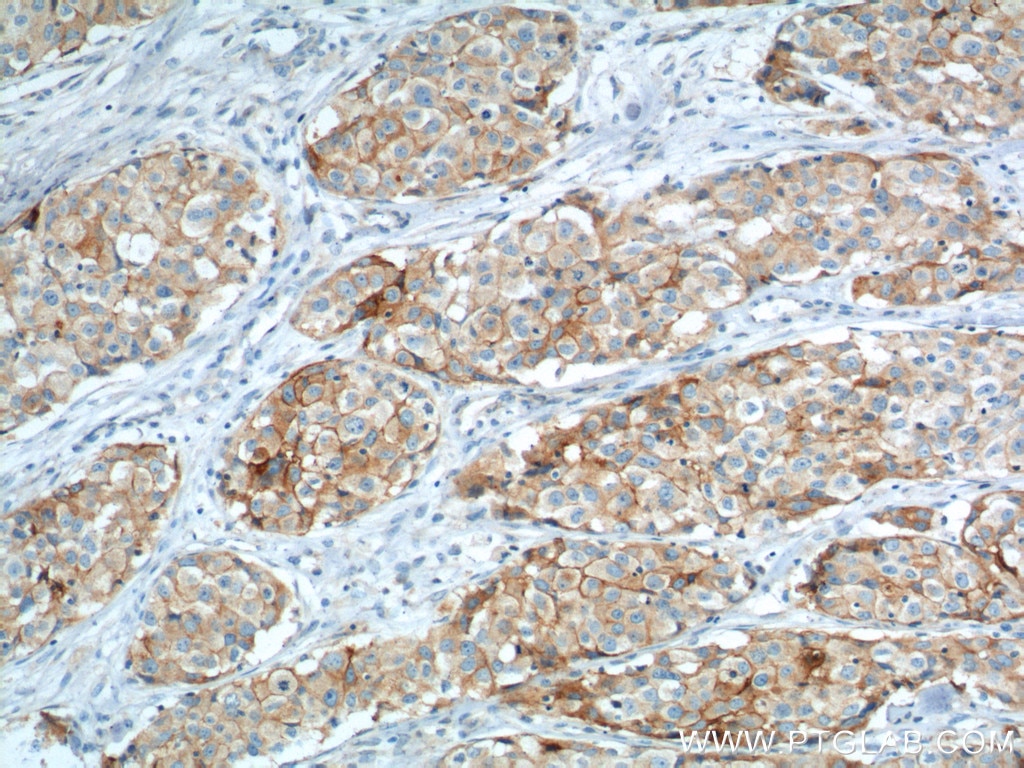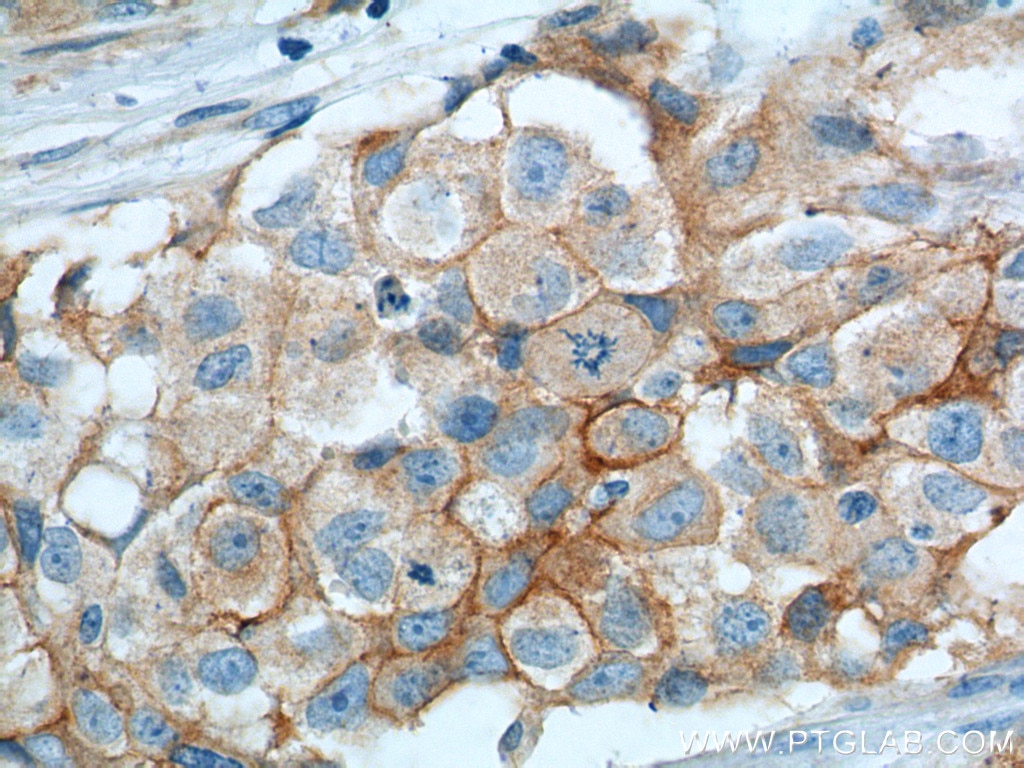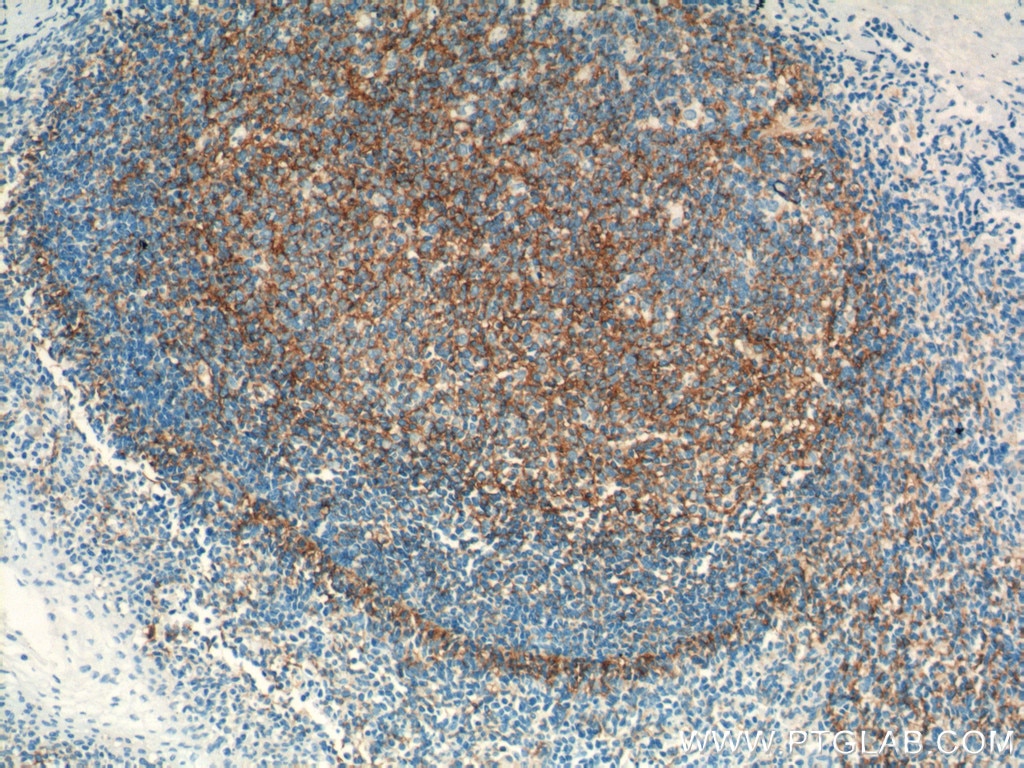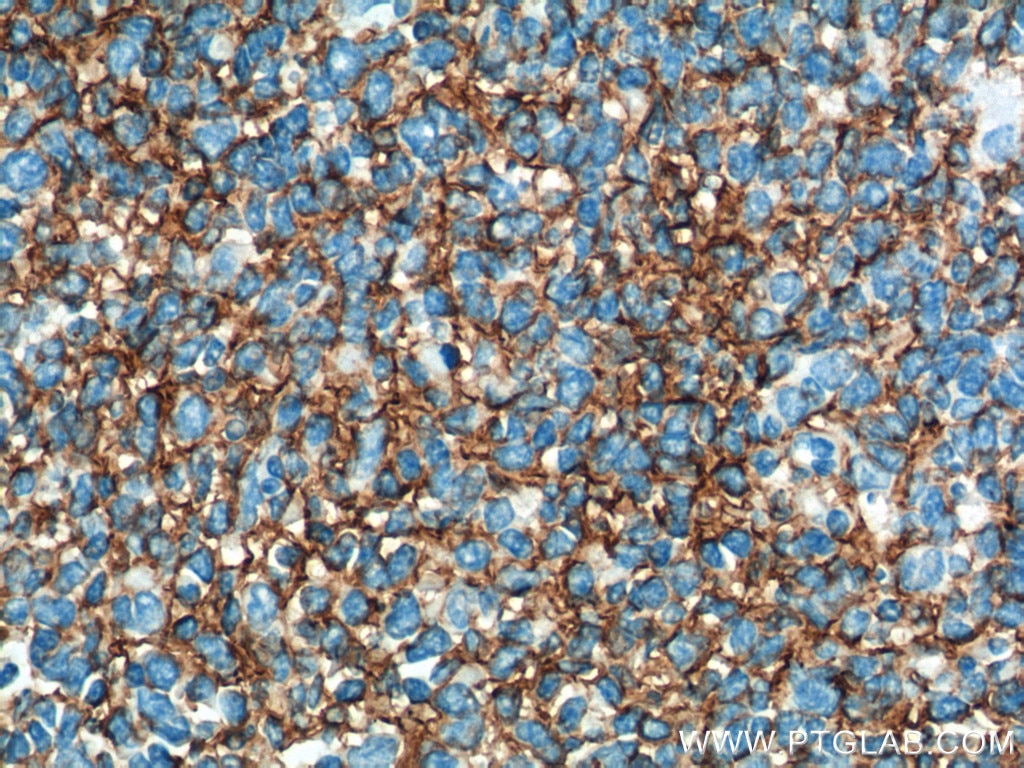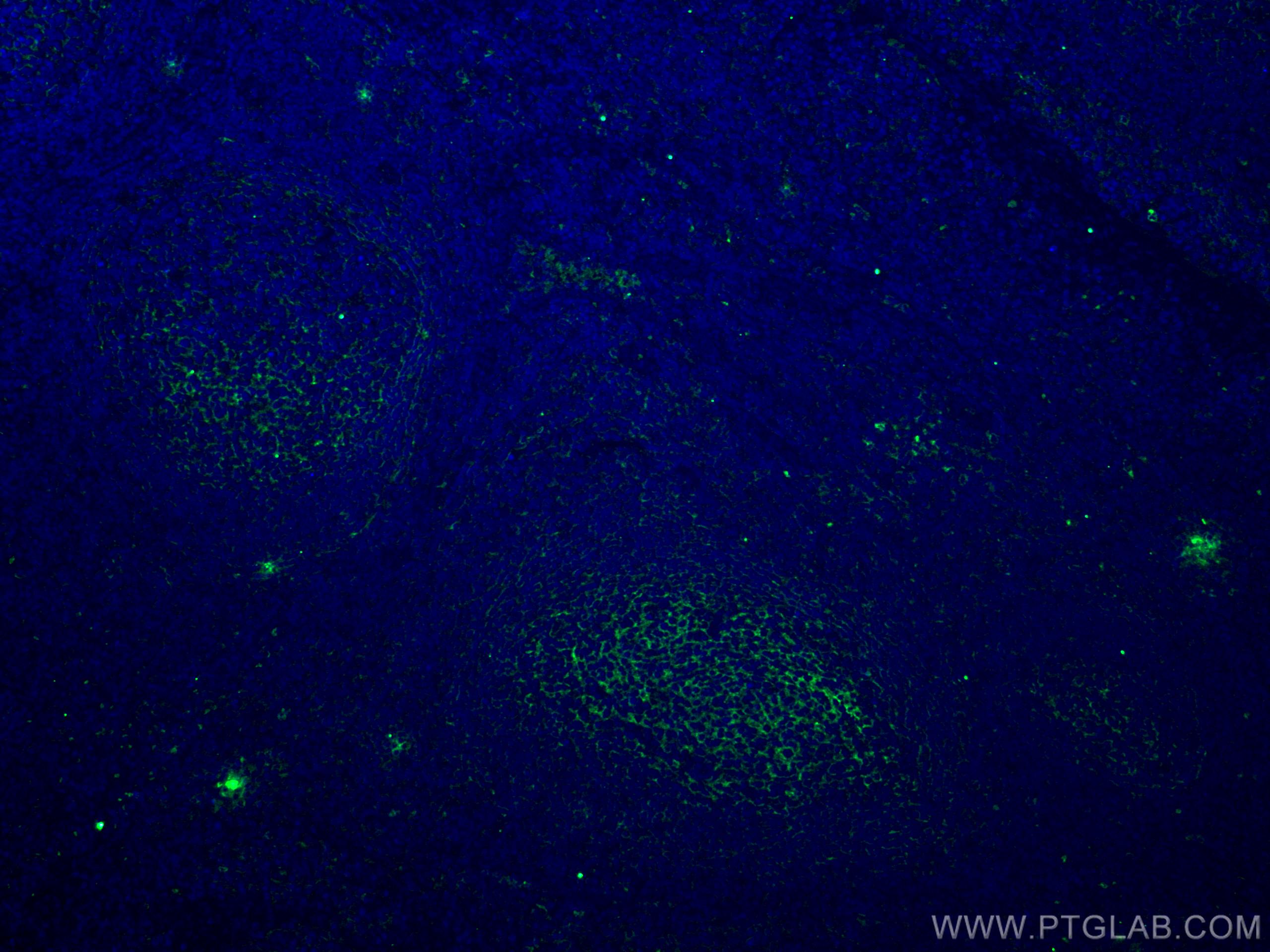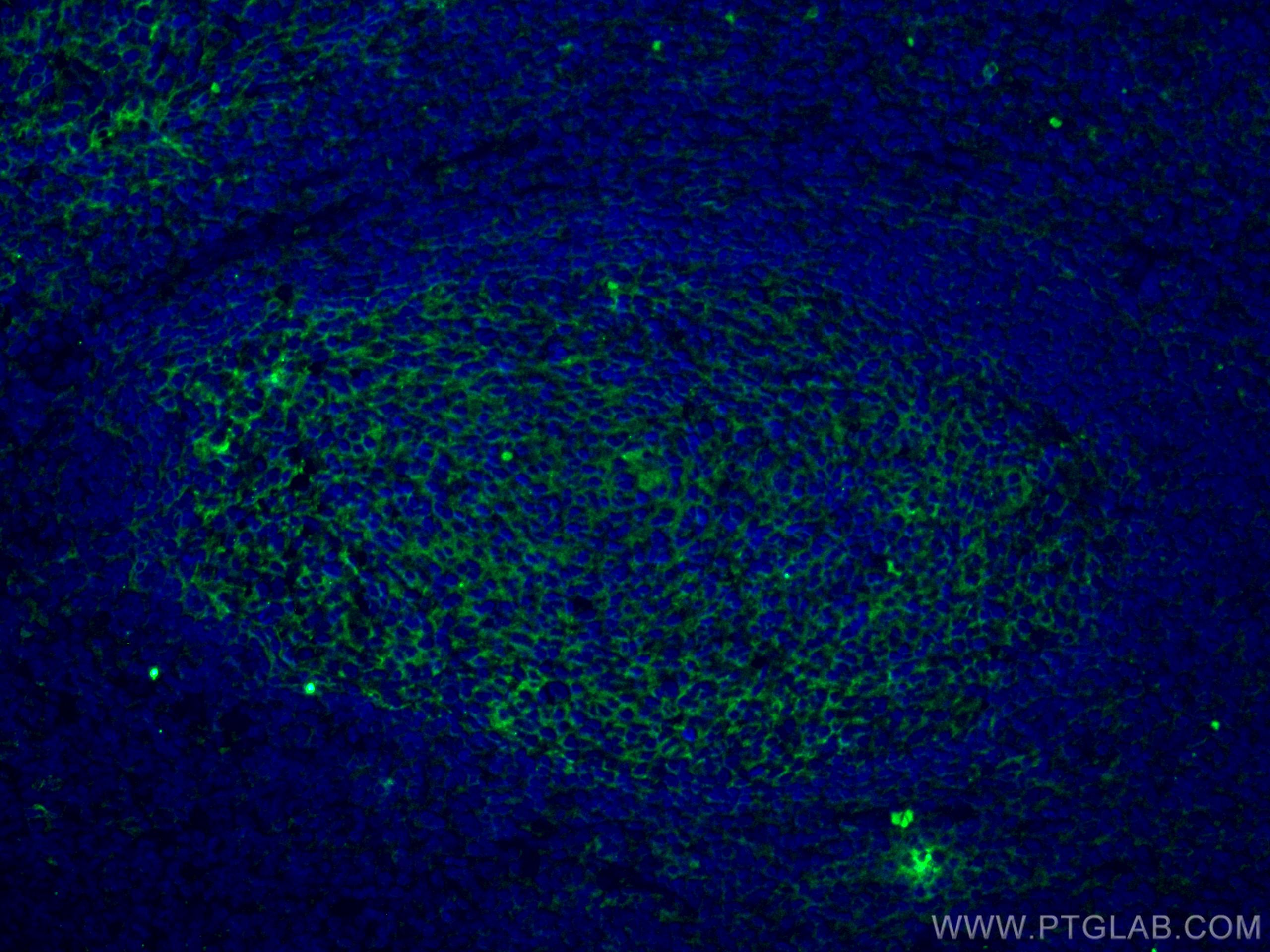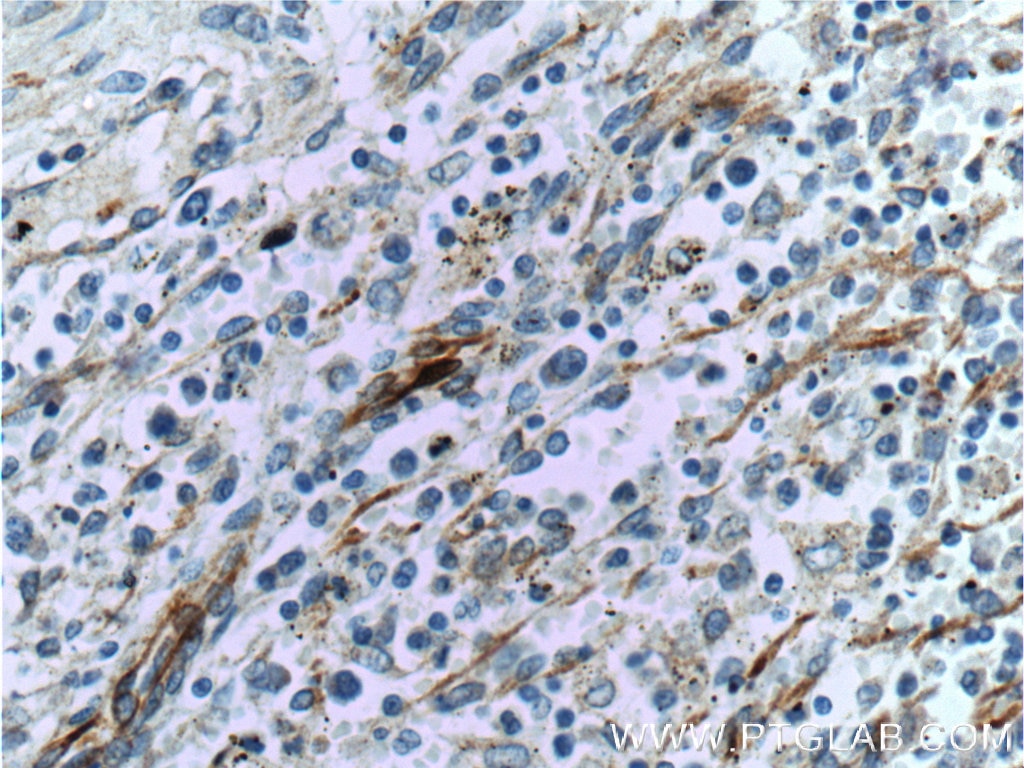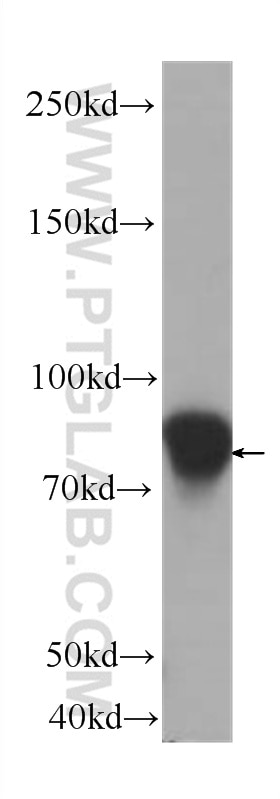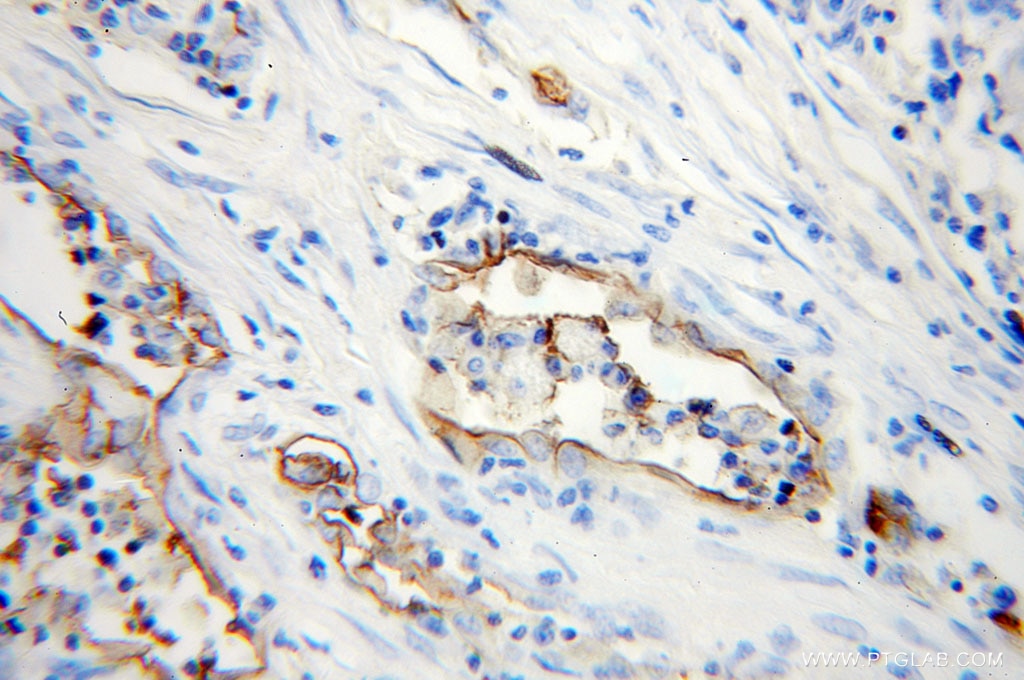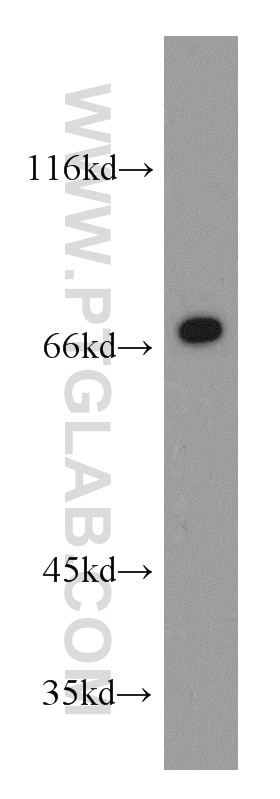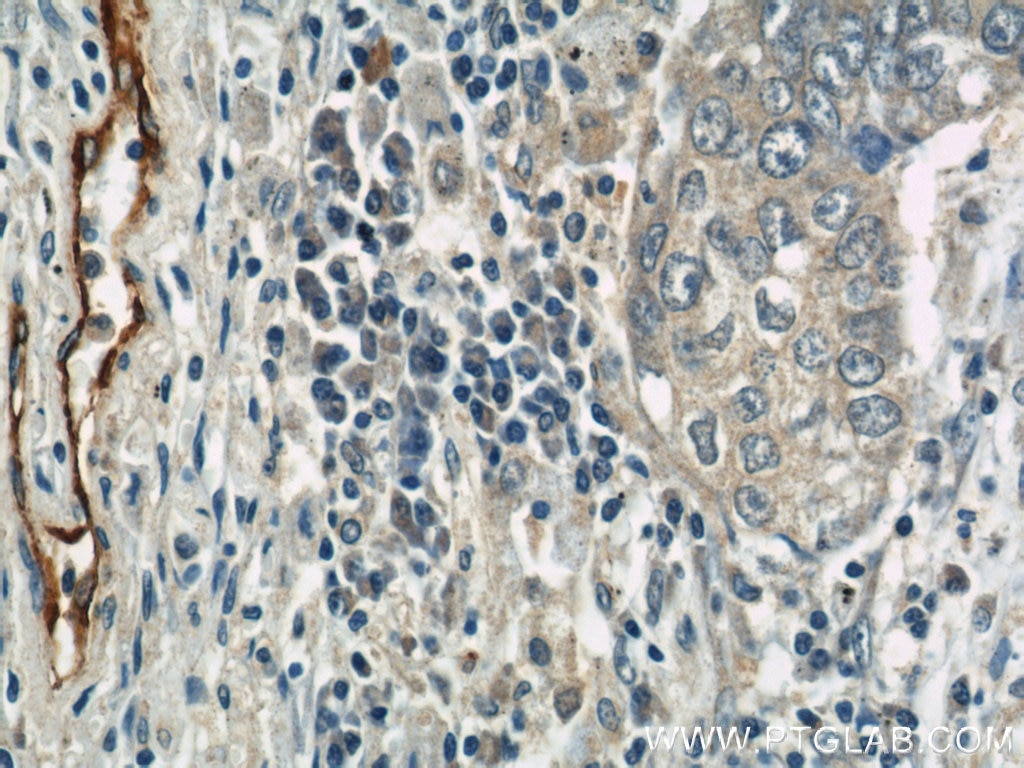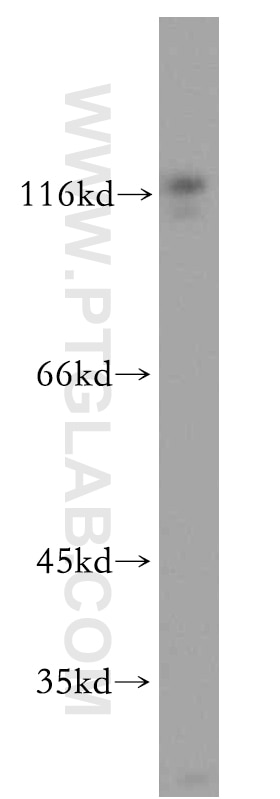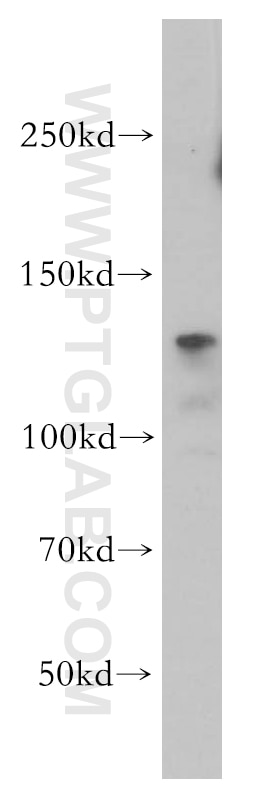Anticorps Monoclonal anti-VCAM-1
VCAM-1 Monoclonal Antibody for IF, IHC, ELISA
Hôte / Isotype
Mouse / IgG2a
Réactivité testée
Humain et plus (1)
Applications
IHC, IF, ELISA
Conjugaison
Non conjugué
CloneNo.
1B12F12
N° de cat : 66294-1-Ig
Synonymes
Galerie de données de validation
Applications testées
| Résultats positifs en IHC | tissu d'amygdalite humain, tissu de cancer du poumon humain il est suggéré de démasquer l'antigène avec un tampon de TE buffer pH 9.0; (*) À défaut, 'le démasquage de l'antigène peut être 'effectué avec un tampon citrate pH 6,0. |
| Résultats positifs en IF | tissu d'amygdalite humain, |
Dilution recommandée
| Application | Dilution |
|---|---|
| Immunohistochimie (IHC) | IHC : 1:2000-1:8000 |
| Immunofluorescence (IF) | IF : 1:200-1:800 |
| It is recommended that this reagent should be titrated in each testing system to obtain optimal results. | |
| Sample-dependent, check data in validation data gallery | |
Applications publiées
| IHC | See 2 publications below |
| IF | See 2 publications below |
Informations sur le produit
66294-1-Ig cible VCAM-1 dans les applications de IHC, IF, ELISA et montre une réactivité avec des échantillons Humain
| Réactivité | Humain |
| Réactivité citée | rat, Humain |
| Hôte / Isotype | Mouse / IgG2a |
| Clonalité | Monoclonal |
| Type | Anticorps |
| Immunogène | VCAM-1 Protéine recombinante Ag24697 |
| Nom complet | vascular cell adhesion molecule 1 |
| Masse moléculaire calculée | 739 aa, 81 kDa |
| Poids moléculaire observé | 110 kDa |
| Numéro d’acquisition GenBank | BC017276 |
| Symbole du gène | VCAM1 |
| Identification du gène (NCBI) | 7412 |
| Conjugaison | Non conjugué |
| Forme | Liquide |
| Méthode de purification | Purification par protéine A |
| Tampon de stockage | PBS avec azoture de sodium à 0,02 % et glycérol à 50 % pH 7,3 |
| Conditions de stockage | Stocker à -20°C. Stable pendant un an après l'expédition. L'aliquotage n'est pas nécessaire pour le stockage à -20oC Les 20ul contiennent 0,1% de BSA. |
Informations générales
Vascular cell adhesion molecule 1 (VCAM1), also known as CD106, is a 110-kDa transmembrane glycoprotein belonging to the immunoglobulin gene superfamily. VCAM1 is expressed by cytokine-activated endothelium, interacts with integrin VLA4 (α4β1) present on the surface of leukocytes, and mediates both adhesion and signal transduction. It is also expressed either constitutively or inducibly in a variety of other cell types, including vascular smooth muscle cells, differentiating skeletal muscle cells, renal and neural epithelial cells, macrophages (Kupffer cells), dendritic cells, and bone marrow stromal cells (PMID: 7507076, 11359843).
Protocole
| Product Specific Protocols | |
|---|---|
| IHC protocol for VCAM-1 antibody 66294-1-Ig | Download protocol |
| IF protocol for VCAM-1 antibody 66294-1-Ig | Download protocol |
| Standard Protocols | |
|---|---|
| Click here to view our Standard Protocols |
Publications
| Species | Application | Title |
|---|---|---|
Redox Biol Targeting mitochondria-inflammation circle by renal denervation reduces atheroprone endothelial phenotypes and atherosclerosis. | ||
J Hazard Mater Amorphous silica nanoparticles induce inflammation via activation of NLRP3 inflammasome and HMGB1/TLR4/MYD88/NF-kb signaling pathway in HUVEC cells. | ||
Int J Biol Macromol Novel soybean polypeptide dglycin alleviates atherosclerosis in apolipoprotein E-deficient mice | ||
Int J Mol Sci Hypoxic Culture Maintains Cell Growth of the Primary Human Valve Interstitial Cells with Stemness. | ||
J Nanobiotechnology Macrophage-cancer hybrid membrane-coated nanoparticles for targeting lung metastasis in breast cancer therapy. |
